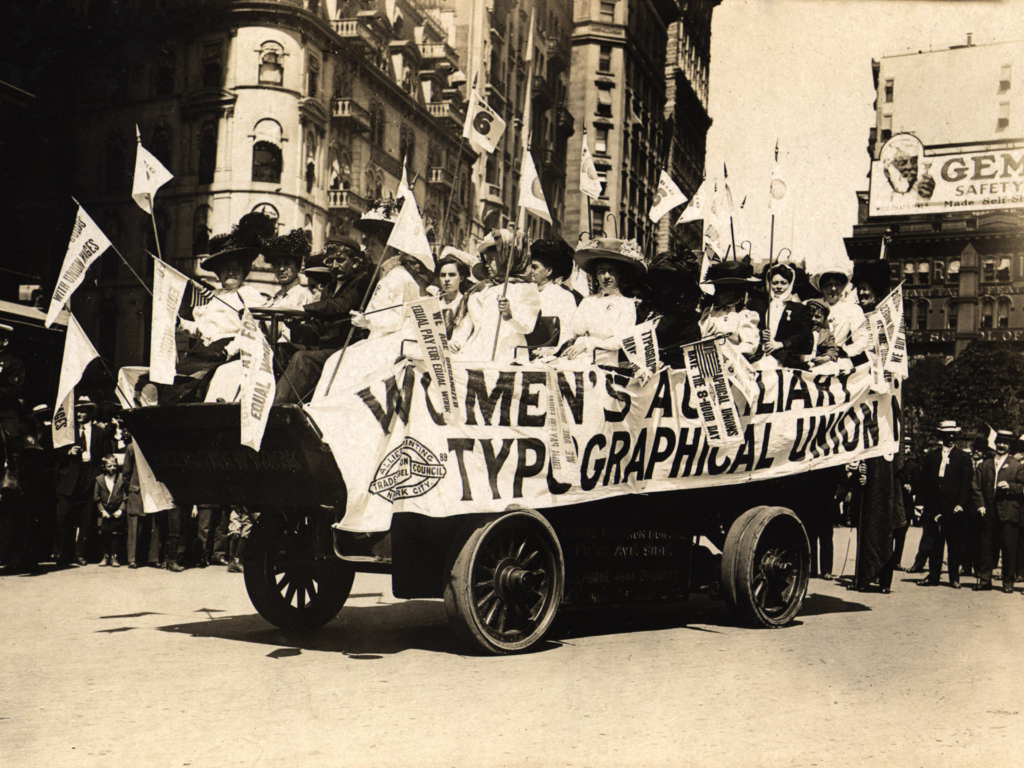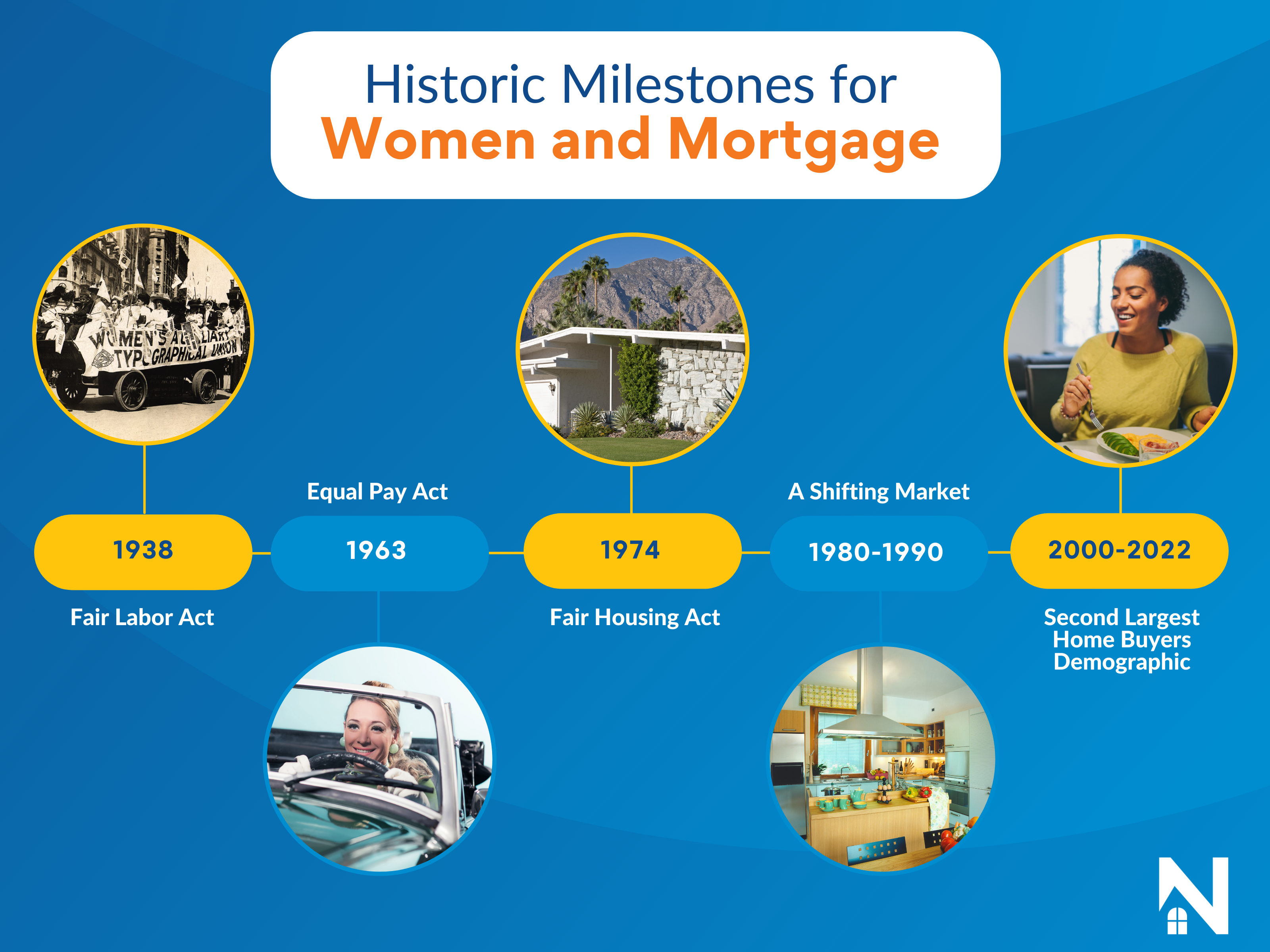Did you know that single women make up the second largest demographic of home buyers in the United States? According to the National Association of Realtors (NAR), 19% of homebuyers in 2022 were single women. That is an impressive feat considering that most single women often couldn’t qualify for a mortgage—or even a credit card—before the Fair Housing Act of 1974.
In honor of Women’s History Month this March, we’re breaking down some historic milestones for women and mortgage over the last 85 years.

Milestone 1: The Fair Labor Act of 1938
To be able to own a home, women first needed to secure stable income. Decades prior to the Fair Labor Act of 1938, women began to slowly become a growing presence in the workforce. However, the working conditions Americans faced in the turn of the 20th century were unregulated and often extremely dangerous.
In the summer of 1938, congress passed the Fair Labor Act. This law introduced several labor laws that paved the way for the working conditions we know today. They standardized a federal minimum wage, 40-hour work week, overtime pay requirements, and protected children by creating and implementing child labor laws.
Standardized working conditions had massive benefits for the American people. However, it’s impact on women in the workforce would come about almost 30 years later, in 1963, because of an amendment to the bill.
Milestone 2: The Equal Pay Act of 1963
The Equal Pay Act of 1963 was integral for women and homeownership. More women were entering the workforce and competing with men for the same jobs, however they often faced gender discrimination. Women were paid exceedingly less than men for the same work, even when they had near identical resumes.
To combat this, congress passed The Equal Pay Act of 1963. This bill prohibits employers from discriminating against employees based on their gender for an equal job with equal qualifications.
While we know that this act did not completely close the gender pay gap – an issue many women still face today – the bill was a step in helping women make a livable wage.
Ultimately, however, women still faced roadblocks when it came to getting a mortgage. The Equal Pay Act was not enough to ensure that the gender gap in housing would be filled. Particularly because women were unable to qualify for credit cards or loans (like mortgages) on their own until the mid-1970’s.

Milestone 3: The Fair Housing Act of 1974
The Fair Housing Act of 1974 is a piece of landmark legislation and changed access to housing for many Americans who faced housing discrimination in the United States. This act would benefit women because it ensured they could qualify for a line of credit (like a credit card or a mortgage). Before 1974, banks and other lenders could, and often would, discriminate against people for a myriad of reasons like disability, race, ethnicity, religion, sexual orientation, gender, and gender identity.
Gender-based discrimination often looked like asking a woman if she were pregnant or planning to become pregnant. Banks could deny women loans based on their responses to these questions.
The Fair Housing Act of 1974 prohibits banks and lenders from discriminating against anyone based on disability, ethnicity, gender, gender identity, race, religion, or sexual orientation for any reason.
This act was a major milestone for many people, including women and mortgage, and changed the landscape of the housing market forever.
Milestone 4: A Shifting Housing Market
The impacts of the Fair Labor Act, Equal Pay Act, and Fair Housing Act have been quintessential in the shift of the housing market. While married couples have consistently been the biggest demographic home buyers, single women have trailed behind since the late 1970’s.
By the early 1980’s, single women owned more homes than single men in the United States. A shift that would have been unthinkable without the passing of previous legislation.
This trend continued throughout the 1990’s. The rise of educated and career driven women even lead to a shift in who headed their households as well. By the 90’s, a third of American households were headed by women.

Milestone 5: The Second Largest Home Buyers Demographic
Over the last 40 years – through recessions, hard economic turns, and while continuing to battle a gender pay gap – women have consistently kept their spot as the second largest demographic of home buyers in the United States. According to a study done by LendingTree, single women own 10.7 million homes in the United States (12.9% of homes across the country). This is while continuing to make 83.1 cents to a male’s dollar.
The Timeline of Women and Mortgage
All in all, the timeline of Women and Mortgage over the last 85 years tells a story of numerous women and leaders fighting to pave the way for future generations. It cannot be understated how far legislation, and a commitment to fighting for what is fair, has done for women and the housing market.
However, there is still a lot of work that must be done to truly level the home buying playing field in the United States. Particularly along the lines of race and gender. Newfi is continually committed to helping all borrowers across the country find mortgage solutions that work for them.

